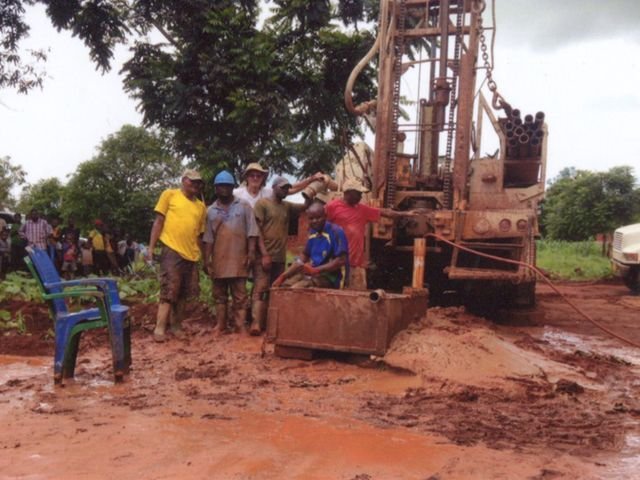If you live in a district in which there are no springs, you will probably have to dig a well to obtain water. the best position for wells are near the edges of swamps or in areas where the water level , which is sometimes called water table, is not far beneath the surface of the ground.
If you seek the advice of your local health inspector , he will give you valuable information about the best place for a good , clean water supply , which will be free from contamination . if a well is dug near a swamp it is usually put about 15 to 20 feet away from the edge.
After you have chosen your site, you may start digging a hole about four to five feet across . if as you dig , you find that the sides of the well fall in the ground is too soft and you must try another site on firmer ground . as you dig deeper , you will find that water will seep into the well.
when there is about four to five feet of water the well is deep enough and it is time to line the well.

source
Wells should be lined with concrete culverts to protect the water , and the top culvert should project the water, about two feet above the level of the surrounding ground. next build a plash apron of concrete around the top of the well , level the ground , to prevent dirty water running back into the well. then build a small roof over the well to protect it and make a windlass so that buckets can be lowered and lifted easily..
Always tend to use natural water for a better healthy.

HOW MUCH FOR TRHE BULLDOZER? TRACTOR? lets buy some with @hivdao but more importantly with http://t.me/telosworks https://telos.net talk to them i will help u geta proposal to pay for 100 water wells that all have the TELOS and HIVE LOGOS on them where peopel get PAID to use it via UPVOTES
Water is the lifeline of all living things, we depend on it for every segment in our day to day life. You have mentioned about how to build an ordinary well. I wounder if you have heard about Tube Wells which is popular in my country Sri Lanka.